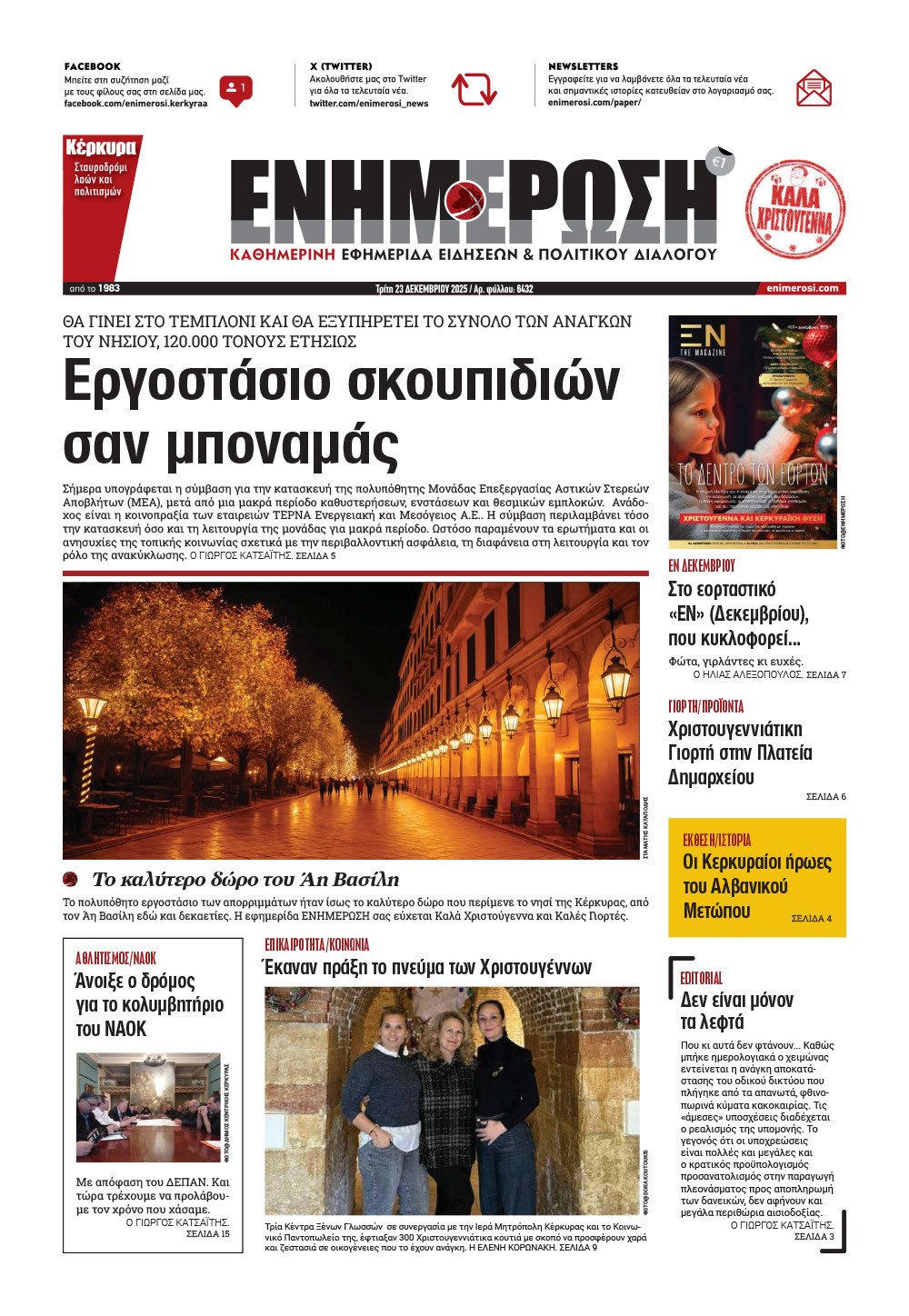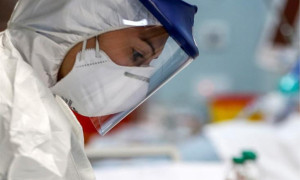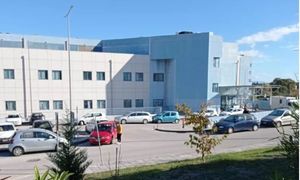Covid Watch Committee: 3.5 cases per 1,000 population in Corfu

coronavirus
04 Jan 2021
/ 14:41
CORFU. The effect of the vaccination programme is expected to be seen at the end of winter as long as it is implemented at a satisfactory rate.
Analysis of the data collected by Central Corfu Municipal Covid Watch Committee shows that the progress of the pandemic in Corfu in the second half of December remains relatively stable.
According to the Committee's latest report, the number of confirmed new cases during that period remains low compared to November but there is an increase compared to the first half of December.
The same applies to the number of hospitalised patients in the hospital's Special Infectious Diseases Unit. The Covid-19 report for Corfu up to 31 December can be seen on the Municipality website here.
As has been previously said, following the imposition of the general lockdown the spike in the number of cases in Corfu in early November was halted. From the end of November to now there has been a relative stabilisation in the situation. Nevertheless, the spread of the virus remains at a fairly high level and has shown an increase in the second half of December. This can be seen in the number of confirmed cases, the number of hospitalisations, the serious cases and the deaths during that period. Local and family clusters have also begun to reappear.
Looking at the whole period of the Covid-19 pandemic since the outbreak it can be seen that it has been less intense in Corfu compared to a lot of other areas in Greece.
From the outbreak of the pandemic to now the total number of confirmed cases in Corfu is 3.5 per 1,000 population compared to 14 per 1,000 for the whole country. The mortality rate from Covid-19 in Corfu is around 14 per 100,000 population compared to 47 per 100,000 for the whole country. There have, however, been significant fluctuations throughout the whole period and there have been uncontrolled spikes in Corfu.
Confirmed Covid-19 cases amongst Corfu permanent residents - age groups and gender for the period 30 May to 31 December.
The exact ages of 9 men and 2 women have not been confirmed
Special care and effort will be needed during the next two winter months in order to avoid the consequences of a possible third wave. Following the increased movement during the festive period it is likely that there will be a significant increase in the spread which will need to be controlled immediately.
The effect of the vaccination programme is expected to be seen at the end of winter as long as it is implemented at a satisfactory rate. Until then the pandemic can only remain under control with strict observation of the measures.
According to the Committee's latest report, the number of confirmed new cases during that period remains low compared to November but there is an increase compared to the first half of December.
The same applies to the number of hospitalised patients in the hospital's Special Infectious Diseases Unit. The Covid-19 report for Corfu up to 31 December can be seen on the Municipality website here.
As has been previously said, following the imposition of the general lockdown the spike in the number of cases in Corfu in early November was halted. From the end of November to now there has been a relative stabilisation in the situation. Nevertheless, the spread of the virus remains at a fairly high level and has shown an increase in the second half of December. This can be seen in the number of confirmed cases, the number of hospitalisations, the serious cases and the deaths during that period. Local and family clusters have also begun to reappear.
Looking at the whole period of the Covid-19 pandemic since the outbreak it can be seen that it has been less intense in Corfu compared to a lot of other areas in Greece.
From the outbreak of the pandemic to now the total number of confirmed cases in Corfu is 3.5 per 1,000 population compared to 14 per 1,000 for the whole country. The mortality rate from Covid-19 in Corfu is around 14 per 100,000 population compared to 47 per 100,000 for the whole country. There have, however, been significant fluctuations throughout the whole period and there have been uncontrolled spikes in Corfu.
Confirmed Covid-19 cases amongst Corfu permanent residents - age groups and gender for the period 30 May to 31 December.
| 0-17 | 18-39 | 40-64 | 65+ | Total | |
| Male | 6 (3.1% | 65 (33.5%) | 80 (41.2% | 43 (21.2%) | 194 |
| Female | 3 (2.1%) | 52 (36.1%) | 61 (42.4%) | 28 (18.4%) | 144 |
| Total | 9 (2.7%) | 117 (34.6%) | 141 (41.7%) | 71 (21%) | 338 |
The exact ages of 9 men and 2 women have not been confirmed
Special care and effort will be needed during the next two winter months in order to avoid the consequences of a possible third wave. Following the increased movement during the festive period it is likely that there will be a significant increase in the spread which will need to be controlled immediately.
The effect of the vaccination programme is expected to be seen at the end of winter as long as it is implemented at a satisfactory rate. Until then the pandemic can only remain under control with strict observation of the measures.












